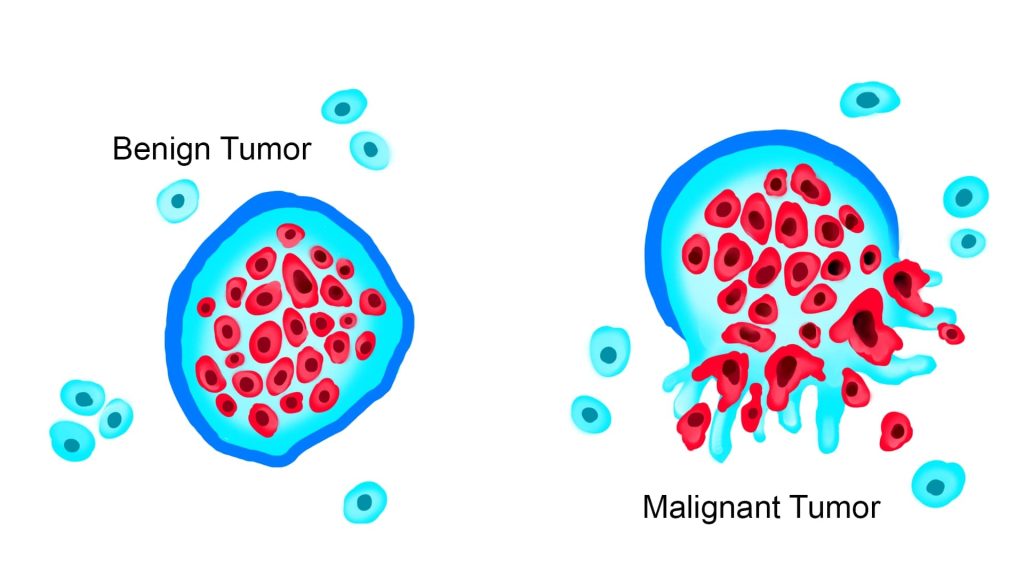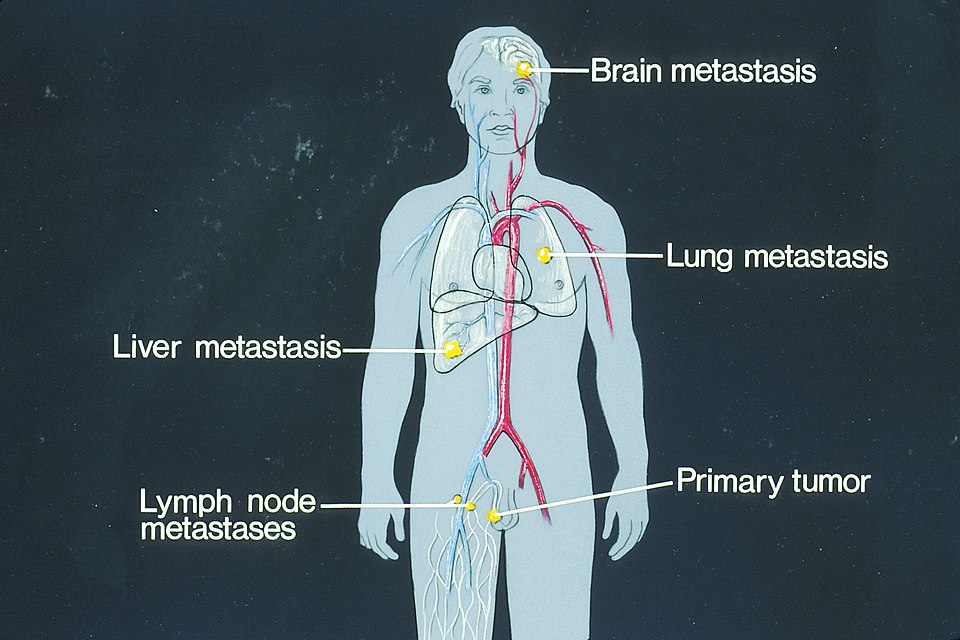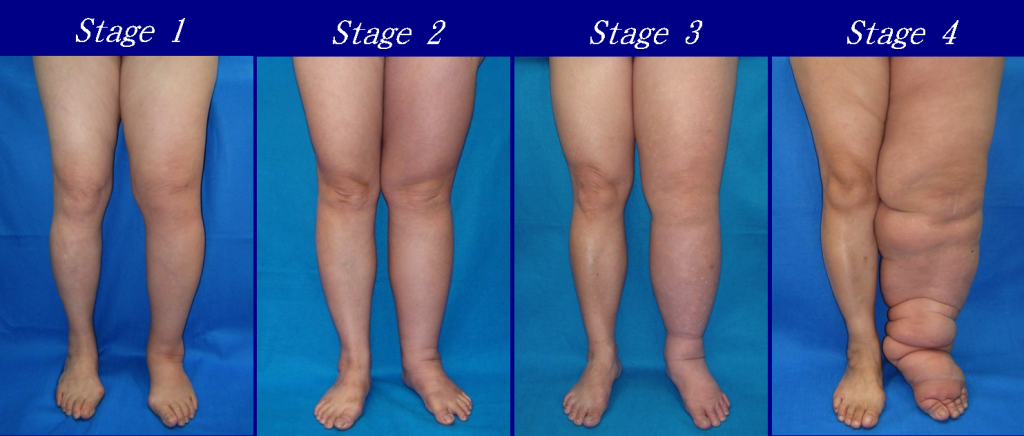12.5 Lymphatic System Disorders
Lymphatic System Disorders
Autoimmune Reactions[1],[2]
Autoimmune reactions occur when the immune system initiates a response against the body’s own healthy cells, tissues, or organs. There are a number of disorders that can cause autoimmune reactions. These disorders are chronic and can affect a variety of tissue types or body systems. Some common autoimmune disorders are as follows:
- Rheumatoid arthritis
- Lupus
- Psoriasis
- Crohn’s disease
- Celiac disease
- Ulcerative colitis
- Type 1 diabetes
- Multiple sclerosis
Risk factors for developing an autoimmune disorder include certain viral infections, being female, family history of autoimmune conditions, already having one autoimmune disease, smoking, and exposure to certain chemicals, like pollution.
The signs, symptoms and treatment of autoimmune reactions depend on the specific disorder that is present. With some autoimmune disorders, there may be times where there are no symptoms (remission) or times where symptoms are present (exacerbation). Even though there may be periods of remission, autoimmune disorders are chronic conditions that cannot be cured.
Cancer[3]
Cancer is a condition of uncontrolled abnormal cell division. Malignant cells exhibit uncontrolled growth and rapidly divide, subsequently invading and causing damage to normal functioning cells. Some cancers also disrupt apoptosis, programmed cell death to regulate cell population. Malignant cells also have the potential to metastasize, or spread, to different parts of the body. When cells metastasize, they spread through the blood or lymphatic system. The spread of cancer cells and their rapid replication and invasion in other areas of the body complicate medical treatment, making it more difficult to rid the body of these abnormal invasive cells.
Benign cells grow and divide in a more controlled manner, remaining localized to a certain area. See Figure 12.12[4] for an illustration comparing benign and malignant tumors.

Metastasis
Metastasis is the spread of cancer cells to other parts of the body. See Figure 12.13[5] for an illustration of metastasis of a primary tumor.

Common sites of metastasis include the following areas:
- Lungs: The lungs are a frequent site of metastasis because they receive a large volume of blood from the body’s circulation. Cancer cells circulating in the bloodstream can easily lodge in the small blood vessels of the lungs, leading to secondary tumor formation.
- Liver: The liver plays a significant role in blood filtration, making it another common site for metastasis.
- Bones: Many cancers, such as breast, lung, and prostate cancer, have a tendency to metastasize to the bones.
- Brain: Cancer cells can reach the brain through the bloodstream.
- Lymph Nodes: Lymph nodes play a role in filtering lymph. Tumors located in close proximity to the lymph nodes, especially breast, gastrointestinal, urological, gynecological, and some skin cancers, are more likely to spread through the lymphatic system.
- Small and Large Intestines: The small and large intestines, including the colon and rectum, are susceptible to metastasis, particularly in colorectal cancer. Cancer cells from the colon can also spread to nearby lymph nodes and to the liver.
- Adrenal Glands: The adrenal glands that sit on top of the kidneys can be affected by metastatic cancer. The adrenal glands have a rich blood supply, making them potential targets for cancer cells circulating in the bloodstream.
- Skin: Melanoma, a type of skin cancer, has a propensity to spread to other parts of the body, including distant skin sites and internal organs.
- Ovaries: In women, ovarian metastasis can occur from cancers that have spread through the bloodstream or lymphatic system. Breast, colorectal, and stomach cancers are examples of cancers that can metastasize to the ovaries.
- Kidneys: Kidney metastasis can occur when cancer cells from other parts of the body reach the kidneys through the bloodstream. The kidneys filter the blood, making them a potential site for cancer cells to become trapped.
Hypersensitivity Reactions[6],[7]
The body’s immune responses are designed to protect us against threats, including infections and cancer. However, an individual’s immune system can have an exaggerated immune response triggered by exposure to a specific antigen, referred to as a hypersensitivity reaction. This kind of exaggerated reaction can damage normal tissues and cause a range of health issues.
Allergic responses are specific types of hypersensitivity reactions that arise when the immune system reacts to allergens. Allergens are substances that are generally harmless to most individuals. Common allergens include pollen, dust mites, pet dander, certain foods, and insect venom. When a person with allergies encounters these allergens, their immune system goes into overdrive, releasing histamines and other inflammatory molecules that trigger symptoms such as itching, sneezing, wheezing, hives, or anaphylaxis (further described below).
Allergies can be diagnosed with skin and blood testing. Allergy symptoms can be treated with antihistamines, steroids, or other anti-inflammatory medications. In certain types of allergic reactions, blood transfusions may be required. When possible, individuals with allergies should stay away from identified triggers.
Anaphylaxis
Anaphylaxis is a severe, potentially life-threatening allergic reaction that can cause bronchoconstriction and swelling of the throat, leading to obstruction of the airway, as well as decreased cardiac output that can lead to shock. Recognition of early symptoms and signs of anaphylaxis and prompt intervention are crucial. Treatment typically involves the administration of epinephrine to dilate the airway and increase blood pressure to stabilize the patient’s condition.
Immunodeficiencies[8]
Immunodeficiency refers to an inadequate immune response caused by immune system dysfunction. An individual who has an impaired or weakened immune system is referred to as immunocompromised. Immunodeficiencies can be inherited or acquired.
Inherited immunodeficiencies arise from genetic mutations that affect specific components of the immune response. Individuals can also acquire immunodeficiencies, such as acquired immunodeficiency syndrome (AIDS) caused by the human immunodeficiency virus (HIV).
Those with immunodeficiencies are at risk for opportunistic infections. Opportunistic infections are infections that occur more often or are more severe in people with weakened immune systems than in people with healthy immune systems. An example of an opportunistic infection is pneumonia caused by Candida, a type of yeast.
Lymphedema[9]
Lymphedema is a chronic disease in which there is an increase of lymphatic fluid in the body. The increase in lymphatic fluid overwhelms the lymphatic system and leads to edema and skin changes. Swelling from lymphedema can occur in the extremities, genitals, face, or torso. See Figure 12.14[10] for an image of different stages of lymphedema of the lower extremities.

Range of motion may be restricted in affected areas due to extreme swelling. Other signs and symptoms are pain, changes in sensation, and feelings of heaviness in the limbs. Over time, the skin in the affected area becomes hard and darkened and swelling cannot be relieved by elevation. In some individuals, lymph fluid may even leak through the skin.
Lymphedema can be a primary or secondary condition. In primary lymphedema, the cause is genetic and leads to impairment of the lymphatic system. Injury to the lymphatic system or removal of lymph nodes (during cancer treatment) can cause secondary lymphedema.
Lymphedema is a progressive condition that has no cure, but treatments are available. Treatment may consist of compression therapy, lymphatic massage, good skin care, or surgical procedures.
Lymphoma[11],[12]
Lymphoma is a form of cancer in which masses of malignant T and/or B lymphocytes collect in lymph nodes, the spleen, the liver, and other tissues. The malignant leukocytes do not function properly, causing increased risk for severe infection. Some types of lymphoma progress slowly and respond well to treatment, but others progress quickly and require aggressive treatment, without which they are rapidly fatal. There are two main types of lymphoma: Hodgkin lymphoma and non-Hodgkin lymphoma.
Hodgkin Lymphoma
In Hodgkin lymphoma, lymphocytes grow out of control, causing swollen lymph nodes and growths throughout the body. Treatments for Hodgkin lymphoma include chemotherapy, radiation therapy, targeted therapy (drugs or other substances that attack specific cancer cells with less harm to normal cells), and cancer immunotherapy. Hodgkin lymphoma can usually be cured if it is found and treated early.
Non-Hodgkin Lymphoma
Non-Hodgkin lymphoma (NHL) is a diverse group of blood cancers that includes all types of lymphoma except Hodgkin’s lymphomas. Non-Hodgkin lymphoma is much less predictable than Hodgkin lymphoma and is more likely to metastasize. The prognosis depends on the type of white blood cell, the stage of the cancer, and the treatment options.
Human Immunodeficiency Virus (HIV)[13]
Human immunodeficiency virus (HIV) is transmitted through semen, vaginal fluids, and blood and causes acquired immunodeficiency syndrome (AIDS). Individuals participating in unprotected sex with multiple partners or sharing needles with other intravenous drug users are at highest risk of exposure to HIV. Infants are also at risk for contracting HIV if their mother is infected with the virus.
Flu-like symptoms may occur one to two weeks after exposure to the HIV virus. These symptoms are followed by seroconversion, with clearance of the virus from the plasma and simultaneous elevated levels of anti-HIV antibodies. These antibodies are the basis for most initial HIV screening performed in the United States. Because seroconversion takes different lengths of time in different individuals, multiple tests must be performed months apart to confirm or refute the diagnosis.
After seroconversion, the amount of virus circulating in the blood stays at a low level for several years. During this time, the levels of CD4+ cells (helper T cells) decline steadily. If left untreated, the immune response becomes so weak that opportunistic disease from normally harmless organisms (such as yeast) results in death.
Treatment consists of medications that target virally encoded proteins necessary for viral replication in cells. By targeting the virus itself and sparing the cells, this approach has been very successful in significantly prolonging the lives of HIV-positive individuals. On the other hand, an HIV vaccine has been in development for over 30 years but has been unsuccessful because the virus mutates rapidly to evade the immune system. Scientists continue to research parts of the virus that do not change and, thus, would be good targets for a vaccine.
Mononucleosis
Infectious mononucleosis (commonly called “mono” or the kissing disease) is caused by the Epstein-Barr virus and is spread through saliva. Teens and young adults are most likely to become infected with mononucleosis with classic signs and symptoms, but young children may also become infected with few symptoms, so they may go undiagnosed. Signs and symptoms of mononucleosis may include the following[14]:
- Fatigue
- Sore throat that doesn’t improve after treatment with antibiotics
- Fever
- Swollen lymph nodes in the neck and armpits
- Swollen tonsils
- Headache
- Skin rash
- Enlarged spleen
The virus has an incubation period (the length of time before symptoms appear after being exposed to the virus) of about four to six weeks, although in young children this period may be shorter. There are no medications available to treat infectious mononucleosis; therefore, treatment mainly involves resting, eating a healthy diet, and drinking plenty of fluids.[15]
- Ernstmeyer, K., & Christman, E. (Eds.). (2024). Medical terminology 2e. Open RN | WisTech Open. https://wtcs.pressbooks.pub/medterm/ ↵
- Mayo Clinic. (2024). Autoimmune diseases. https://my.clevelandclinic.org/health/diseases/21624-autoimmune-diseases ↵
- Ernstmeyer, K., & Christman, E. (Eds.). (2024). Medical terminology 2e. Open RN | WisTech Open. https://wtcs.pressbooks.pub/medterm/ ↵
- “Tumor_Types_MTK.jpg” by WolfpackBME is licensed under CC BY-SA 4.0 ↵
- “Sites_of_potential_metastases_illustration.jpg” by unknown author, via National Cancer Institute is licensed in the Public Domain ↵
- Ernstmeyer, K., & Christman, E. (Eds.). (2024). Medical terminology 2e. Open RN | WisTech Open. https://wtcs.pressbooks.pub/medterm/ ↵
- Mayo Clinic. (2024). Allergies. https://www.mayoclinic.org/diseases-conditions/allergies/symptoms-causes/syc-20351497 ↵
- Ernstmeyer, K., & Christman, E. (Eds.). (2024). Medical terminology 2e. Open RN | WisTech Open. https://wtcs.pressbooks.pub/medterm/ ↵
- Sleigh, B. C., & Manna, B. (2023). Lymphedema. StatPearls [Internet]. https://www.ncbi.nlm.nih.gov/books/NBK537239/ ↵
- “Lower_Limb_Lymphedema” by DocHealer is licensed under CC BY-SA 4.0 ↵
- Ernstmeyer, K., & Christman, E. (Eds.). (2024). Medical terminology 2e. Open RN | WisTech Open. https://wtcs.pressbooks.pub/medterm/ ↵
- Betts, J. G., Young, K. A., Wise, J. A., Johnson, E., Poe, B., Kruse, D. H., Korol, O., Johnson, J. E., Womble, M., & DeSaix, P. (2022). Anatomy and physiology 2e. OpenStax. https://openstax.org/books/anatomy-and-physiology-2e/pages/1-introduction ↵
- Betts, J. G., Young, K. A., Wise, J. A., Johnson, E., Poe, B., Kruse, D. H., Korol, O., Johnson, J. E., Womble, M., & DeSaix, P. (2022). Anatomy and physiology 2e. OpenStax. https://openstax.org/books/anatomy-and-physiology-2e/pages/1-introduction ↵
- Mayo Clinic. (2022). Mononucleosis. https://www.mayoclinic.org/diseases-conditions/mononucleosis/symptoms-causes/syc-20350328 ↵
- Mayo Clinic. (2022). Mononucleosis. https://www.mayoclinic.org/diseases-conditions/mononucleosis/symptoms-causes/syc-20350328 ↵
A generic term for many diseases in which cells escape regulatory signals.
Exhibit uncontrolled growth and rapidly divide, subsequently invading and causing damage to normal functioning cells.
Spread to other areas of the body.
Grow and divide in a more controlled manner, remaining localized to a certain area.
The spread of cancer cells to other parts of the body.
An exaggerated or inappropriate immune response to an antigen that causes tissue damage.
Specific types of hypersensitivity reactions that arise when the immune system reacts to allergens.
Substances that trigger an allergic immune response in sensitive individuals.
A severe, potentially life-threatening allergic reaction that can cause bronchoconstriction and swelling of the throat, leading to obstruction of the airway, as well as decreased cardiac output that can lead to shock.
Refers to an inadequate immune response caused by immune system dysfunction.
An individual who has an impaired or weakened immune system.
Infections that occur more often or are more severe in people with weakened immune systems than in people with healthy immune systems.
A chronic disease in which there is an increase of lymphatic fluid in the body.
A form of cancer in which masses of malignant T and/or B lymphocytes collect in lymph nodes, the spleen, the liver, and other tissues.
The length of time before symptoms appear after being exposed to the virus.

